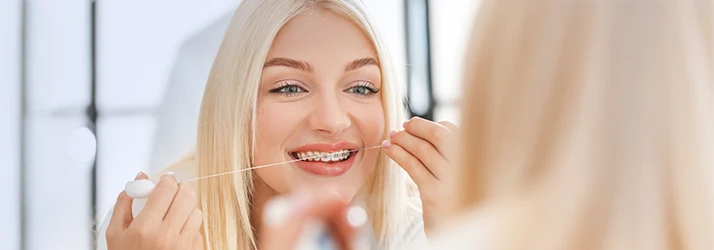Flossing With Braces: How to Keep Your Smile Clean Between the Wires

Let’s talk about something that doesn’t get enough credit during orthodontic treatment: flossing. When you’re wearing braces, brushing alone just doesn’t cut it. Those wires and brackets are great for straightening teeth, but not so great when it comes to keeping every little space clean. That’s where flossing comes in.
Yes, it’s a little more work. No, it’s not optional. Flossing with braces in Freeport IL and Monroe WI is the key to avoiding cavities, gum issues, and stains that can sneak in during treatment. And the good news? Once you learn a few tricks, it becomes part of your daily routine in no time.
Why Is Flossing So Important With Braces?
Think of your braces like scaffolding. They're helping move your teeth into the right place, but they also create more nooks and crannies for food and bacteria to hide. Flossing clears out what your toothbrush can’t reach—between teeth and under wires.
Skip it, and you’re risking:
- Plaque buildup
- Red, swollen gums
- Tooth decay between the teeth
- White spots that stay behind after braces come off
Bottom line? A healthy smile is just as important as a straight one.
How Often Should I Floss?
Once a day. Every day. No exceptions.
The best time to floss is at night, so you’re going to bed with a clean mouth. And while it might feel time-consuming at first, you’ll get faster the more you do it. Plus, keeping your gums healthy helps your treatment go more smoothly—and sometimes even faster.
Tools That Make Flossing Easier
Flossing with braces doesn’t have to be a struggle. Here are a few tools that can make a big difference:
- Floss Threaders
These simple tools help guide the floss under your archwire. Think of it like threading a needle—but for your teeth. They're inexpensive and easy to find at any drugstore. - Orthodontic Floss
This type of floss has a built-in stiff end, so you can slide it between your braces without a separate threader. Convenient and quick. - Water Flossers
If you're not a fan of traditional floss, this might be your new best friend. A water flosser uses a gentle stream of water to flush out food and plaque. It’s effective, easy to use, and gentle on sensitive gums. - Interdental Brushes
Perfect for reaching around brackets and getting into tight spaces. These tiny brushes are great for a quick clean when flossing isn’t possible.
Step-by-Step: How to Floss With Braces
Not sure how to do it right? Follow these steps:
- Start with about 18 inches of floss.
- Use your threader or the stiff end to guide it under the archwire.
- Gently work the floss between two teeth.
- Move it up and down against both sides—don’t snap!
- Remove, reposition, and repeat for each tooth.
What Happens If You Don’t Floss?
Unfortunately, the effects of skipping floss don’t always show up right away—but they will show up. That could mean:
- Cavities between your teeth
- Gums that bleed or recede
- Permanent staining or decalcification
- Prolonged treatment due to inflammation or infection
Flossing is your first line of defense—and trust us, your future smile will thank you.
Keep Your Braces—and Your Smile—Clean and Healthy
Braces are a commitment, and flossing is a crucial part of making that commitment count. It’s not about being perfect—it’s about being consistent. A few extra minutes a day can make the difference between a good result and a great one.
Not sure which flossing tools are right for you? Ask us at your next appointment in Freeport IL or Monroe WI we’re happy to help you find a method that works. Your smile is worth it.


